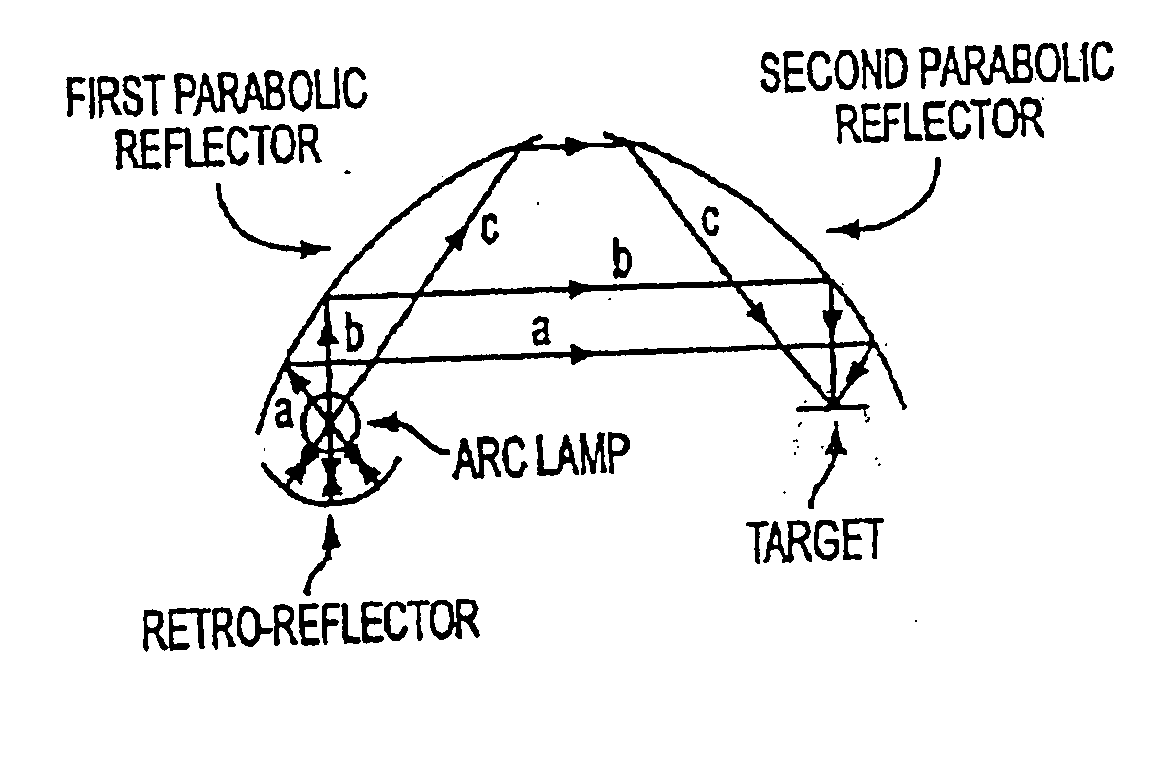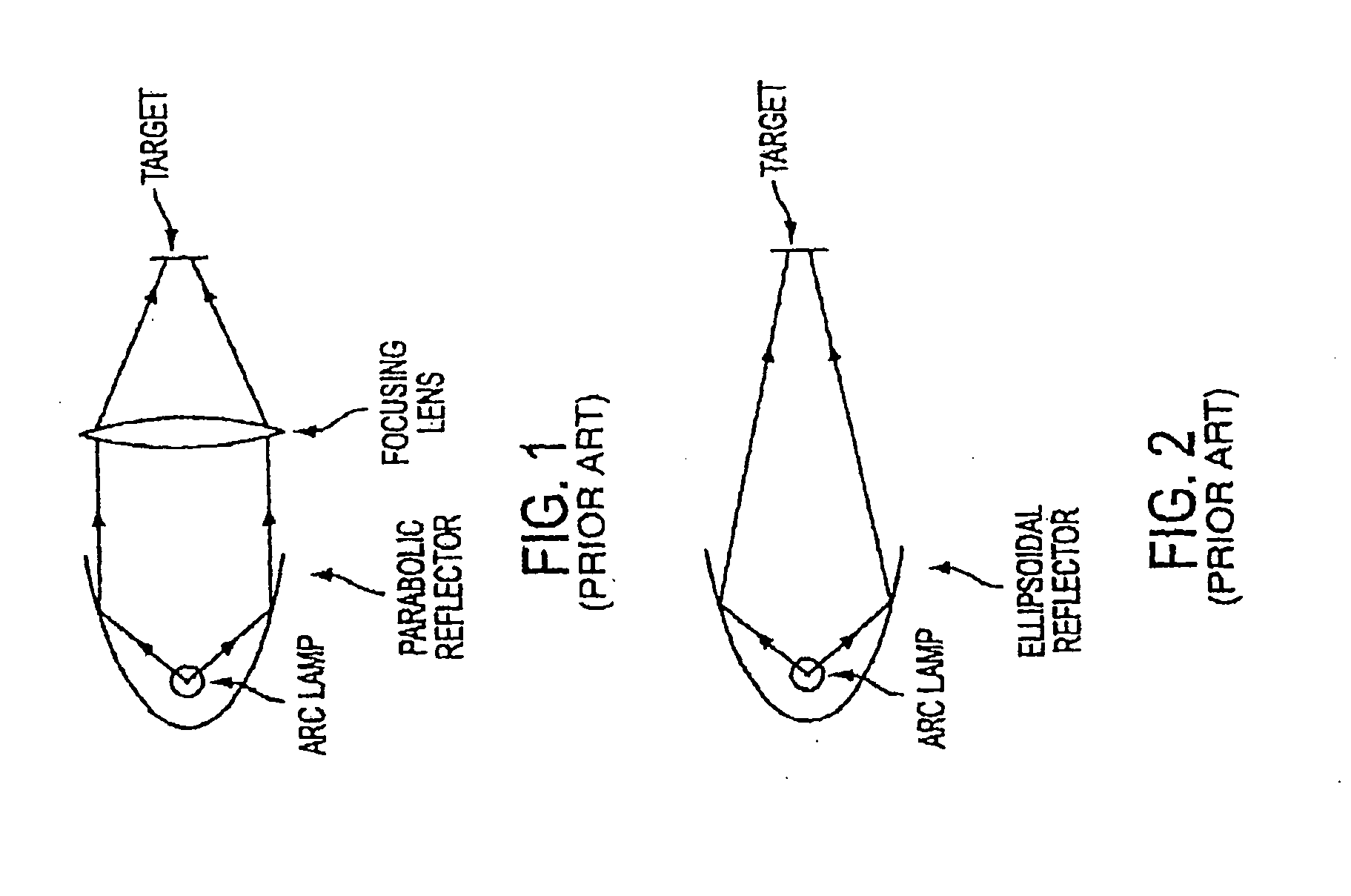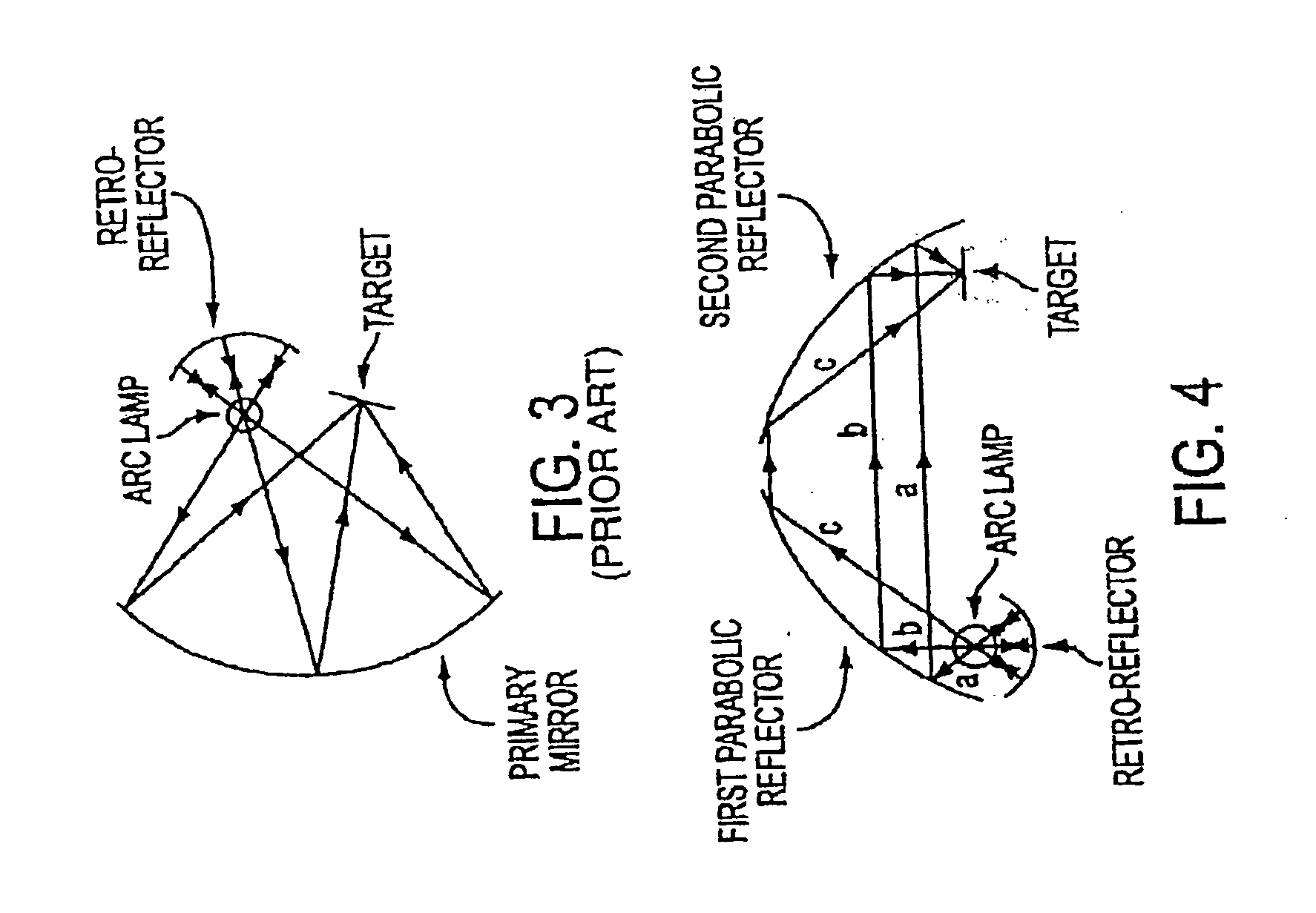Dual paraboloid reflector and dual ellipsoid reflector systems with optimized magnification
a paraboloid reflector and magnification technology, applied in the field of electromagnetic radiation collection and condensation systems, can solve the problems of degrading degrading the brightness of the system, and affecting the efficiency of the overall efficiency of the optical illumination and projection system, so as to reduce the incidence angle of rays, maximize the net output coupling efficiency, and reduce the loss of fresnel reflection
- Summary
- Abstract
- Description
- Claims
- Application Information
AI Technical Summary
Benefits of technology
Problems solved by technology
Method used
Image
Examples
examples
[0070] A first pair of exemplary optical systems in accordance with the present invention uses a low wattage lamp, in the order of 100 Watts, as the lights source. In a reflection system in accordance with the embodiment of FIG. 5, each of the first and second reflectors has a diameter of 2.5 inches, and the separation between the source and target (i.e., the distance between the foci) is about 5 inches. In contrast, a low wattage reflection system of greater eccentricity in accordance with the embodiment illustrated in FIG. 6 uses first and second reflectors of similar size, each having diameter of approximately 2.5 inches, but has a distance between the source and target of approximately 2 inches.
[0071] In higher wattage applications, the optical system is relatively larger to provide desirable collection of the higher electromagnetic energy levels and to accommodate the potentially larger lamps. For example, when using a high wattage lamp, on the order of 5,000 Watts with the co...
PUM
 Login to View More
Login to View More Abstract
Description
Claims
Application Information
 Login to View More
Login to View More - R&D
- Intellectual Property
- Life Sciences
- Materials
- Tech Scout
- Unparalleled Data Quality
- Higher Quality Content
- 60% Fewer Hallucinations
Browse by: Latest US Patents, China's latest patents, Technical Efficacy Thesaurus, Application Domain, Technology Topic, Popular Technical Reports.
© 2025 PatSnap. All rights reserved.Legal|Privacy policy|Modern Slavery Act Transparency Statement|Sitemap|About US| Contact US: help@patsnap.com



